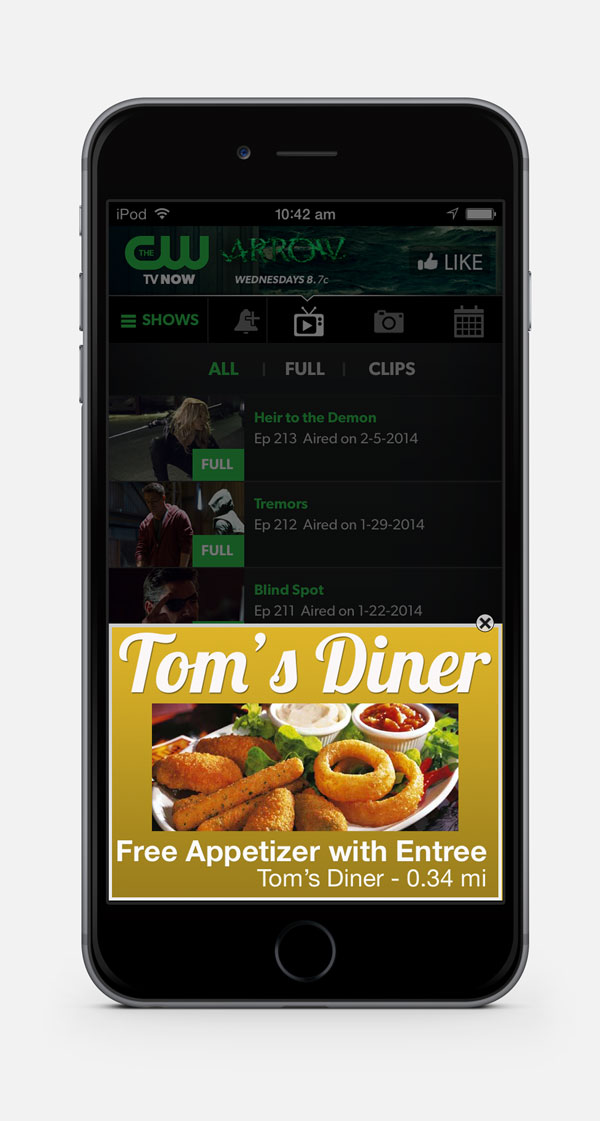Do you think most app developers are finding success with in-app advertising?
Well, they are, and in-app mobile advertising revenues are exploding. They’ve quadrupled since 2011, and they’re forecast to be over $76B worldwide in 2017.1 That’s because click-through rates on in-app ads are much higher than the 0.1% rate for desktop web ads.2 They’re proven tools for driving success through app monetization.
That’s good news, isn’t it? After all, in-app advertising is easy. All you need is a bunch of banner ads, and suddenly you’re bringing in money every single minute. Everyone taps banner ads, don’t they?
So Many Ad Types!
If you’re done chuckling, you understand a basic problem. In-app advertising isn’t as simple as rolling out a bunch of banner ads. Over the past few years, we’ve seen a proliferation of different ad formats. There’s a complex arms race for mobile advertising dollars, with many tested and emerging ad formats to help you reach your business goals.
It’s also worth mentioning that the old days of static advertising are fading away. Static ads are being augmented with various kinds of attention-getting media, including animation, video and rich media (in-app games, for example). These opportunities for distinctive advertising boost complexity as well.
Since the in-app advertising format landscape is a little complicated, let’s clarify matters by covering the most common ad formats. Here the pros and cons for each ad type, including average click-through rates (CTR):
Pros, Cons and Click-Through Rates of Mobile Ad Types
Native. With native ads, advertising content fits seamlessly in your app’s layout and user experience. Brand messaging or app downloads are delivered in a non-intrusive way, leading to a better user experience and a CTR of around 1.37 percent.3 But there’s a downside; development costs are higher than banner ads.
Interstitial. These full-page ads appear between content pages, and are commonly used on games as content “interruptions” between app levels. Since they’re much larger than banner ads, they contain more content and can present more calls to action, resulting in a 5.70 percent average CTR. They’re also commonly used for branding. However, they’re more expensive than banner ads and typically take longer to develop. Despite those cons, interstitials are becoming the ad format most developers prefer.4
Exit Ads. Unlike banners, native ads and interstitials, which occur within an app, exit ads occur when a user taps the back button or home button. The user can either tap on the ad to engage with it further or tap on the X icon (or home soft key) to come back to the home screen. Available for branding or app downloads, exit ads can be an effective tool if you’re trying to avoid disrupting the user experience within your app.
Splash Ads. Splash ads are like interstitials or exit ads in that they’re full-page ad formats that stand apart from application functionality. Splash ads occur as an app is launched but before it fully loads, and can be used for branding, lead generation or app downloads.
App Lists. An app list ad format looks exactly like it sounds. Advertised apps appear in a list format for users to scroll through. With many apps in the list, odds are good that users will download something. One network observes a 7.14 percent CTR, which ought to make you take notice.
Panels. Panels are very successful ads, with a 12.60 percent CTR on one ad network. What is a panel? It’s akin to a list ad, but unlike list ads, which display limited advertiser information, panel ads reserve more real estate for each advertiser’s ad. Fewer ads means more opportunity for advertisers to promote themselves distinctively. It’s an attractive ad format, but since it can’t display as many advertisers as the list, it has its limits.
Slider. This format is a rising star, not very common as of yet, but becoming more popular because it offers a distinct user experience. An overlay unit on the bottom of a page mirrors touchscreen habits. If a user slides across the overlay, an entire ad page appears, unveiling a full brand experience.
Banners. Finally, the humble banner. Banners are common, cheap and easy to create, enabling massive reach. A wide variety of advertisers use them for lead generation, retargeting, brand building or app download. But they’re probably one of the least effective ways to drive revenue because click-through rates are relatively low, often around 0.20 percent, and they’re susceptible to accidental taps as well.
As a developer, you have many different opportunities to drive your success with mobile advertising—and with other monetization techniques. By connecting with a trusted partner, you can find the right mix of ad formats, content, frequency and reach to help you achieve your basic business goals.









Thanks for a marvelous posting! I really enjoyed reading it,
you’re a great author. I will always bookmark your blog and will come back from now on. I want
to encourage that you continue your great posts, have a nice day!